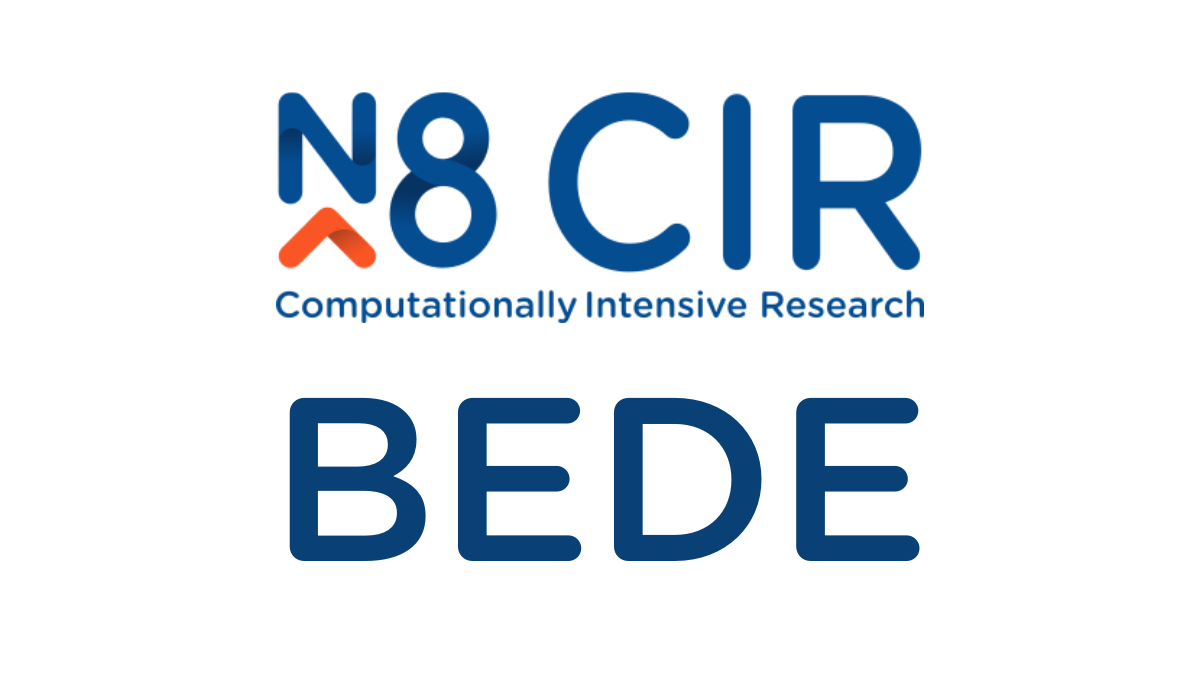
Bede is the N8’s Tier 2 Power and GPU-based high-performance computing (HPC) platform.
Housed at Durham University, this brand-new supercomputer is available to researchers across the N8 Research Partnership to help accelerate research and scientific discovery. In addition, a significant fraction of the system will be available to researchers through Engineering and Physical Sciences Council (EPSRC) research allocation panels.
Bede uses IBM POWER9 CPUs connected to NVIDIA Tesla V100 GPUs that enable it to tackle larger problems and higher resolution imagery than has previously been possible. This unique architecture is ideally suited to artificial intelligence (AI) and machine learning (ML) applications. Bede will also be able to work with much higher resolution imagery than has previously been possible.
Dr Alan Real, N8 CIR’s Technical Director says “Bede enables us to deal with data at a scale that other machines can’t. It’s not just far faster, it enables us to tackle problems that were simply beyond our capabilities before.”
The capital costs of Bede have been funded by the EPSRC with additional costs, such as power and enabling works shared between the eight universities of the N8 Research Partnership.
Since the system was handed over on 17 August, the team at Durham University have been working to fully commission the system ready for its formal launch. They have tailored the hardware and software environments to make it as easy as possible for researchers to maximise the benefits of the system’s unique GPU-based architecture.
Researchers who wish to use the system should visit the N8 CIR website for details of the application process: https://n8cir.org.uk/supporting-research/facilities/nice/bede-docs/bede_registrations/
Experienced users of high-performance platforms will be familiar with accessing a system such as Bede. However, researchers new to HPC shouldn’t be put off from applying for access. As part of the Bede project, each of the universities are employing a full-time equivalent research software engineer (RSE) to help researchers to work with Bede and encourage improvements in research code and coding habits. These RSEs will support researchers to access and utilise HPC in their work, a key goal of the group that manages Bede on behalf of the N8.
The system is not restricted to N8 CIR’s current research priorities of Digital Health and Digital Humanities. Researchers from all academic domains should consider applying for access. Each of the N8 Universities have equal access to the machine. In addition, there is a separate allocation for non-N8 EPSRC-funded researchers.
As part of the testing and commissioning process researchers have already been using the system to progress their work.
Chris Jewell, senior lecturer in Epidemiology at Lancaster University, said, “In modelling the spread of COVID-19 around the UK, the power of GPU computing allows us to use Bayesian statistics to calibrate our models in real-time, providing up-to-date information on disease risk, reproduction numbers, and the effect of COVID-19 Alert Levels (local lockdowns) for SAGE. Our advice currently feeds into SAGE reports as well as local authorities, and is used to support important disease control decisions on a national scale.”
Bede has also been used in simulations to characterise the structural changes in spike associated with the new SARS-CoV-2 UK strain. Professor Michele Vendruscolo of the Centre for Misfolding Diseases, University of Cambridge, said “We expect that these simulations will enable the development of a structure-based antibody discovery strategy for this strain, as well as for possible new strains that may arise in the future.”
N8 CIR Programme Director Professor Matt Probert said “We are already seeing the benefits of Bede’s GPU-accelerated architecture to scientific research. Having ready access to a tier 2 HPC cluster for each of the N8 universities offers us a real competitive edge.”